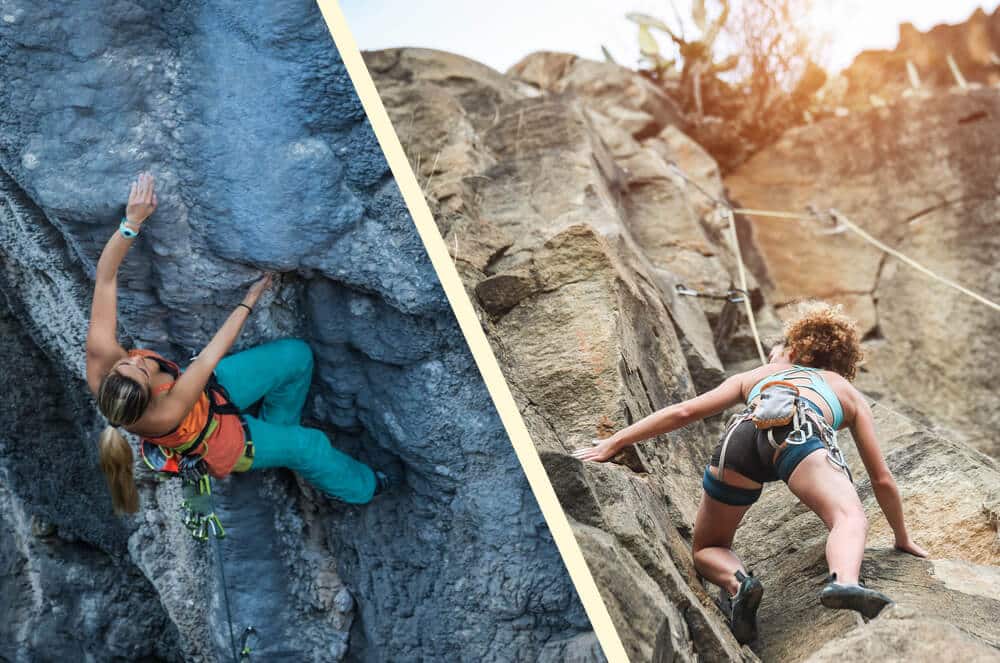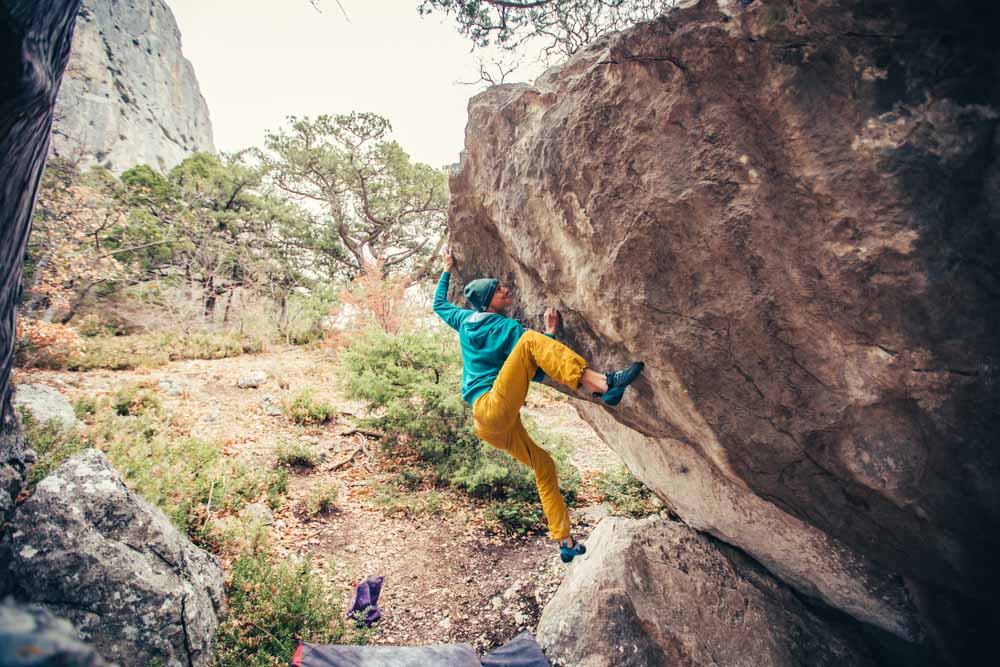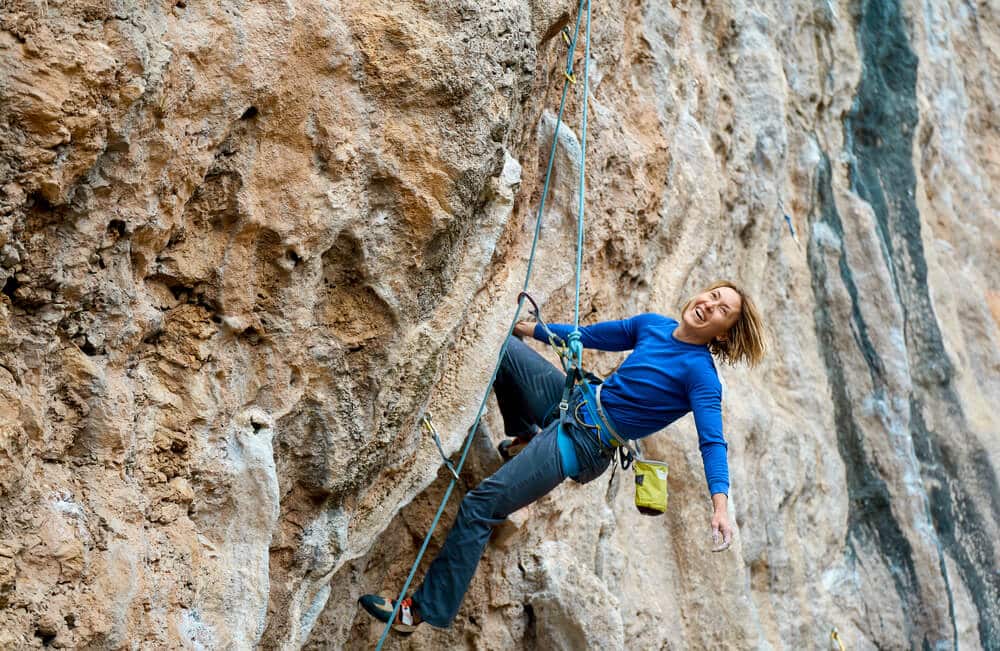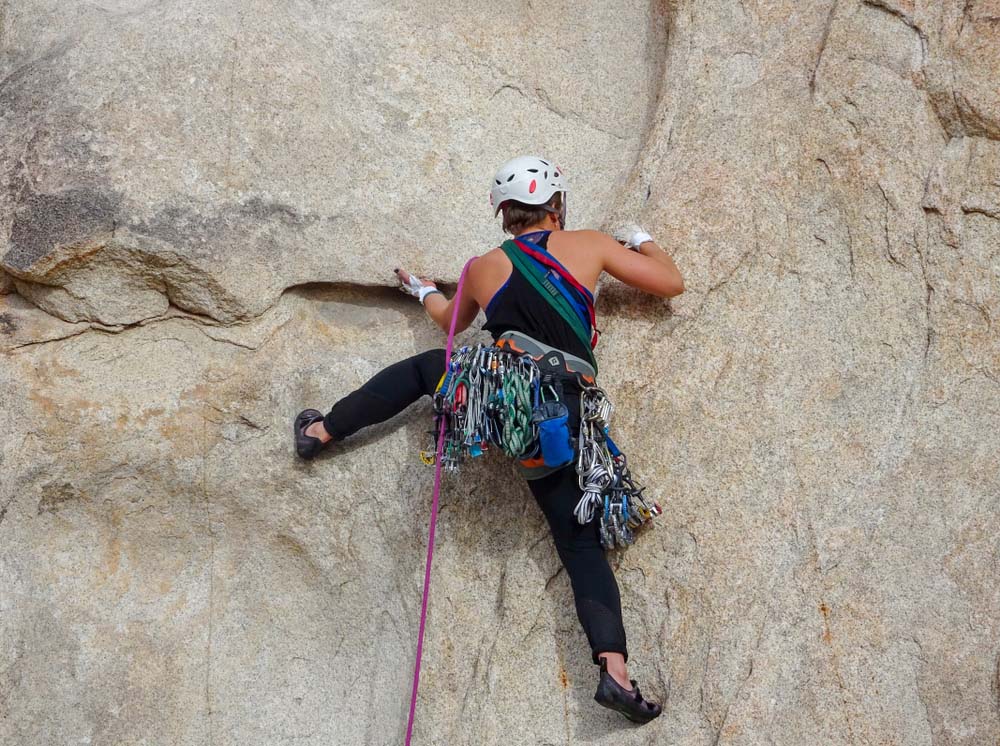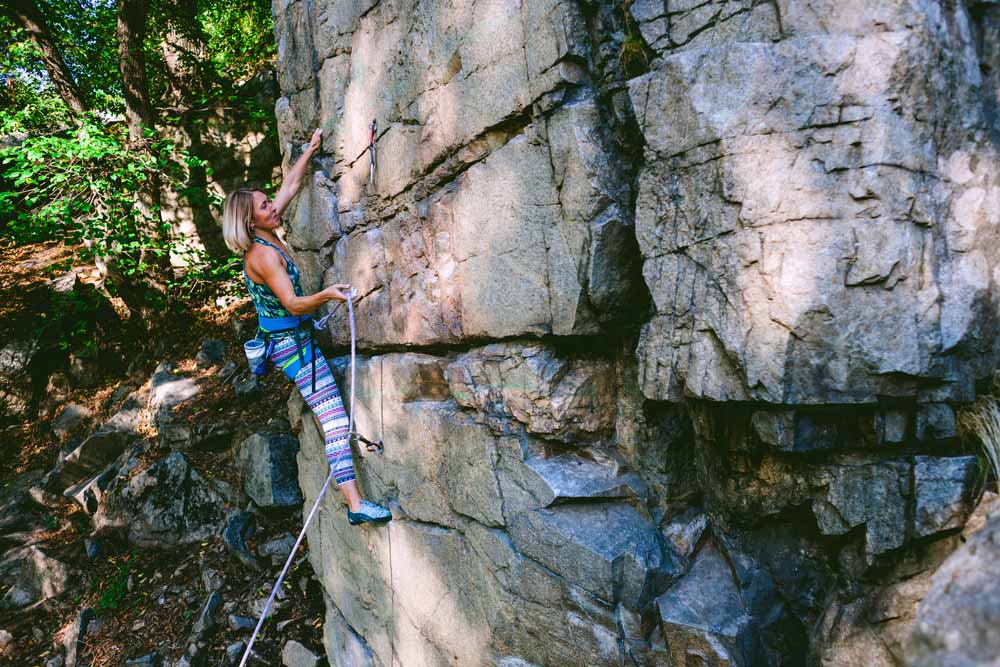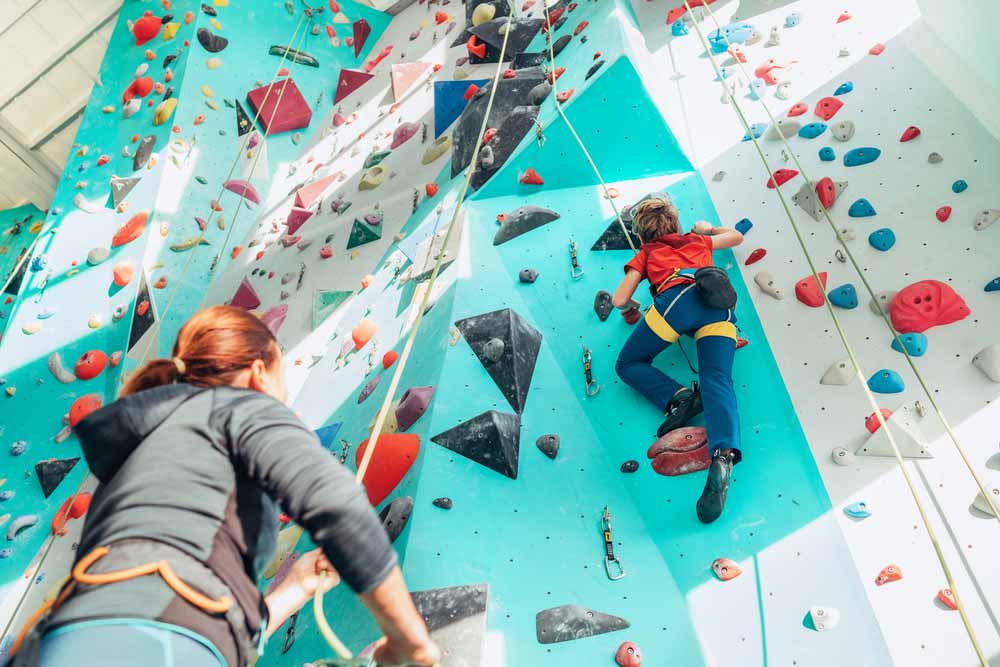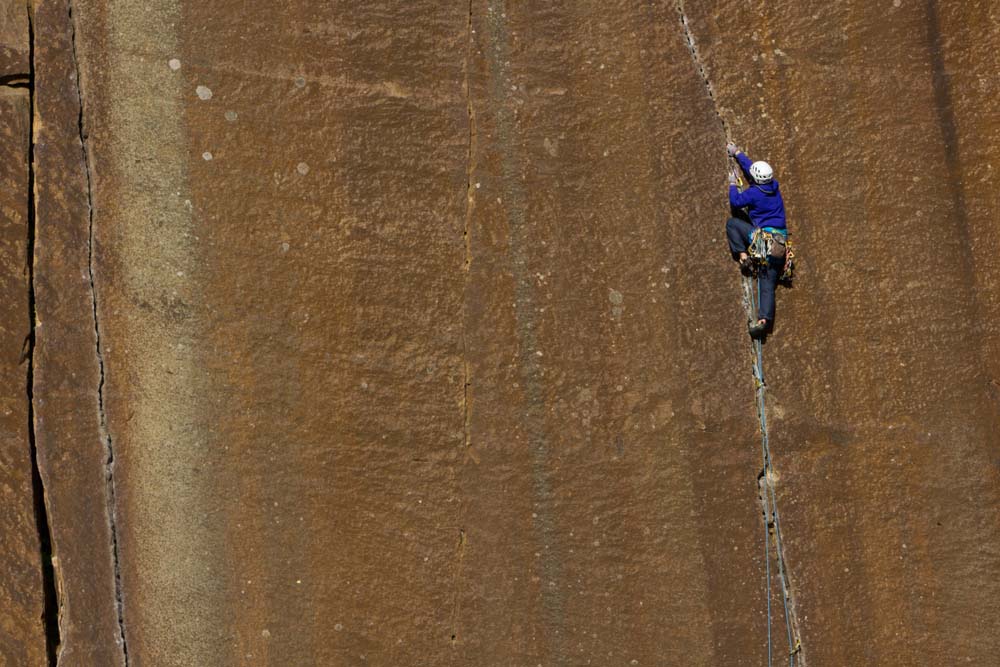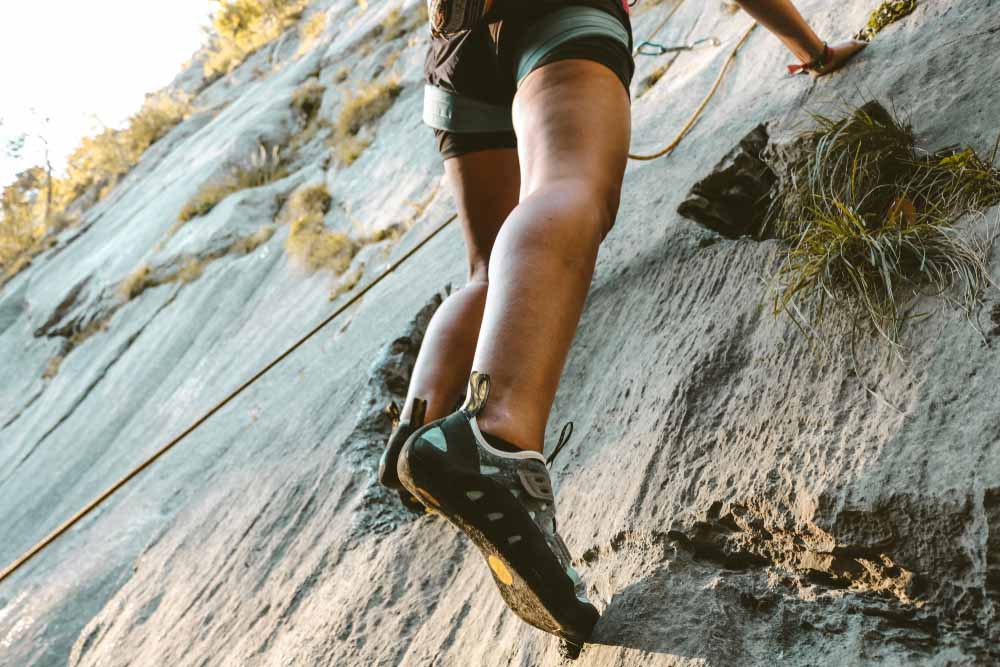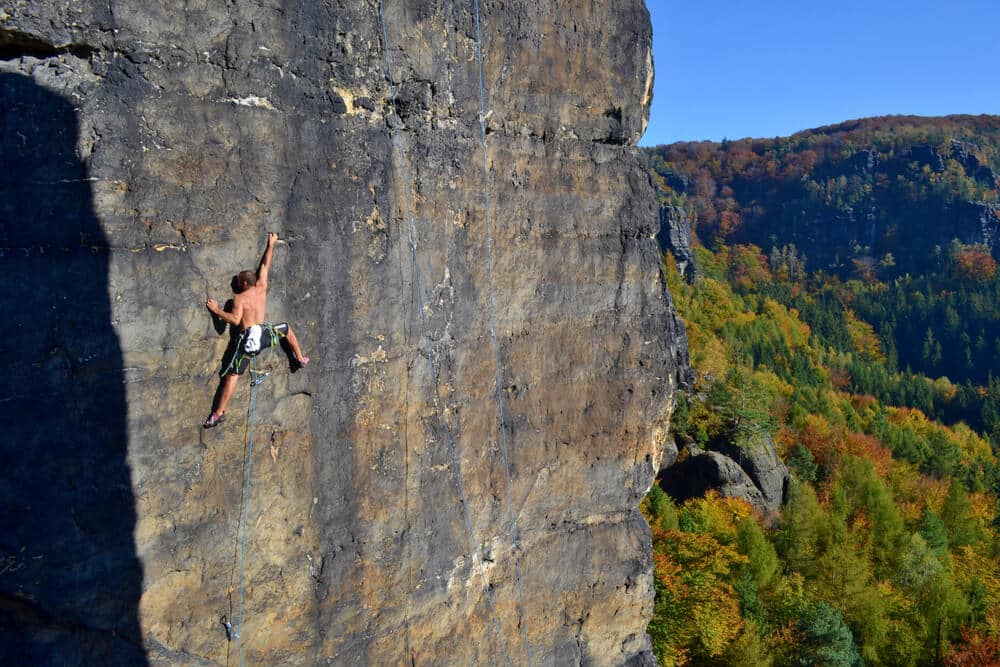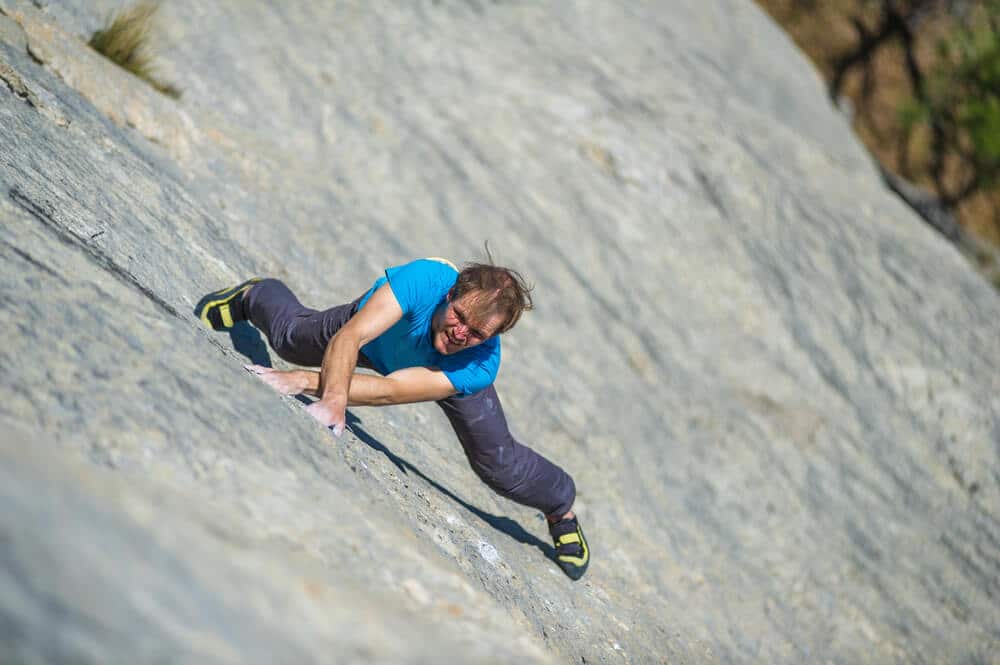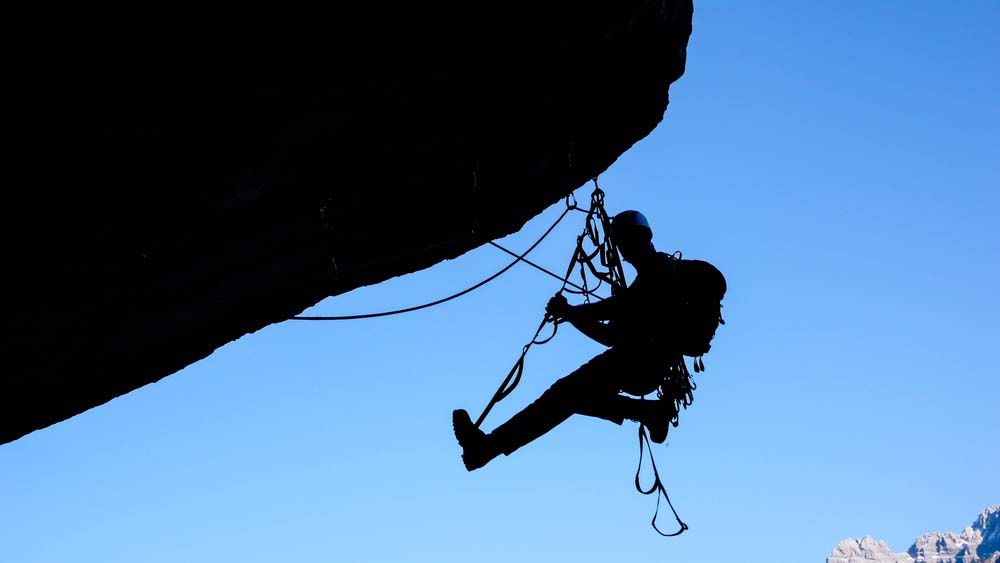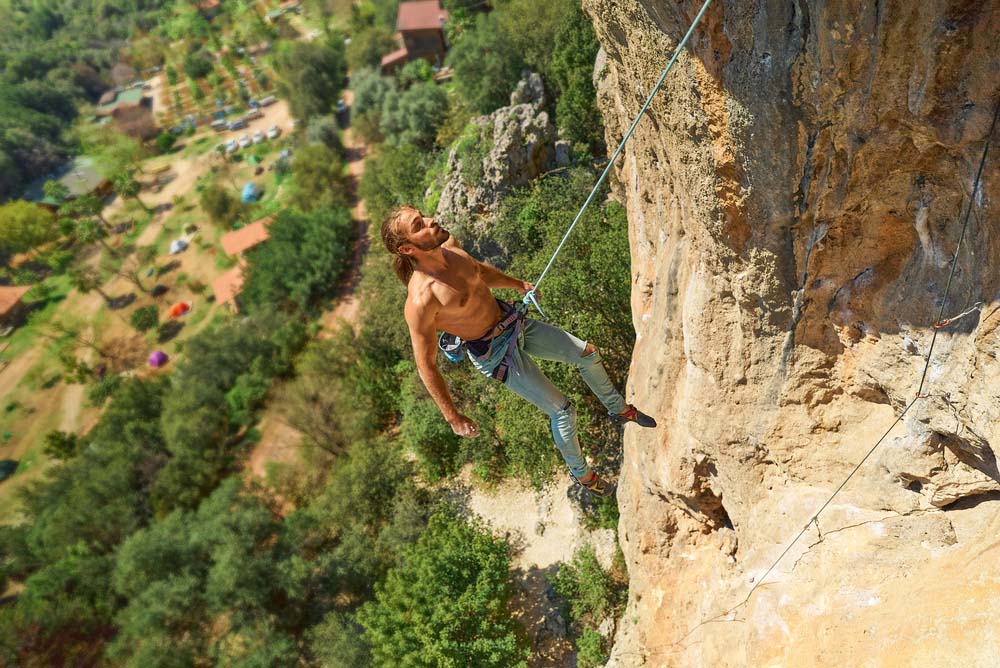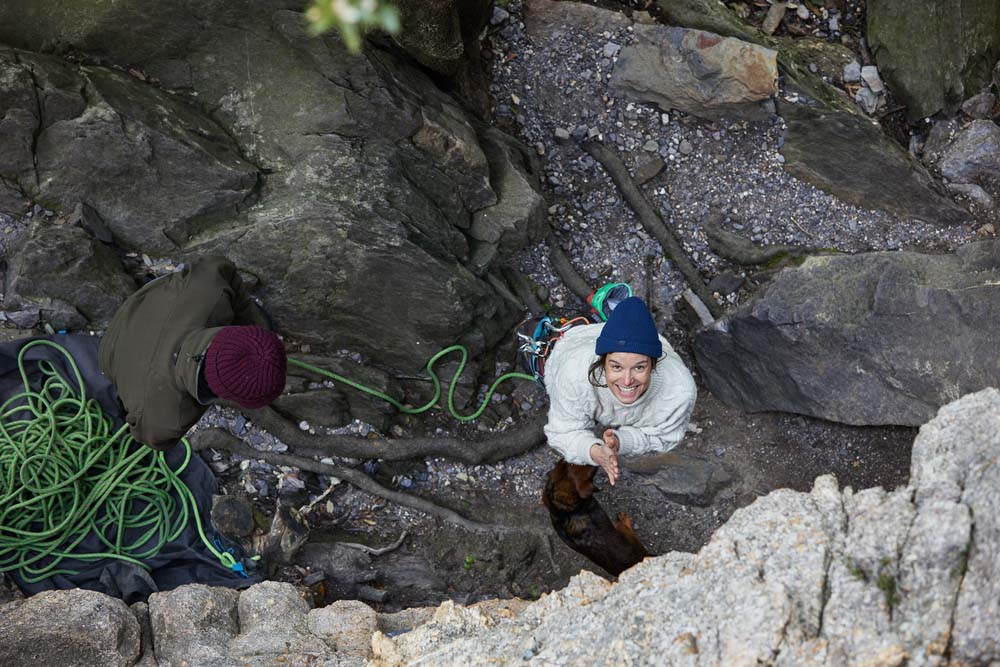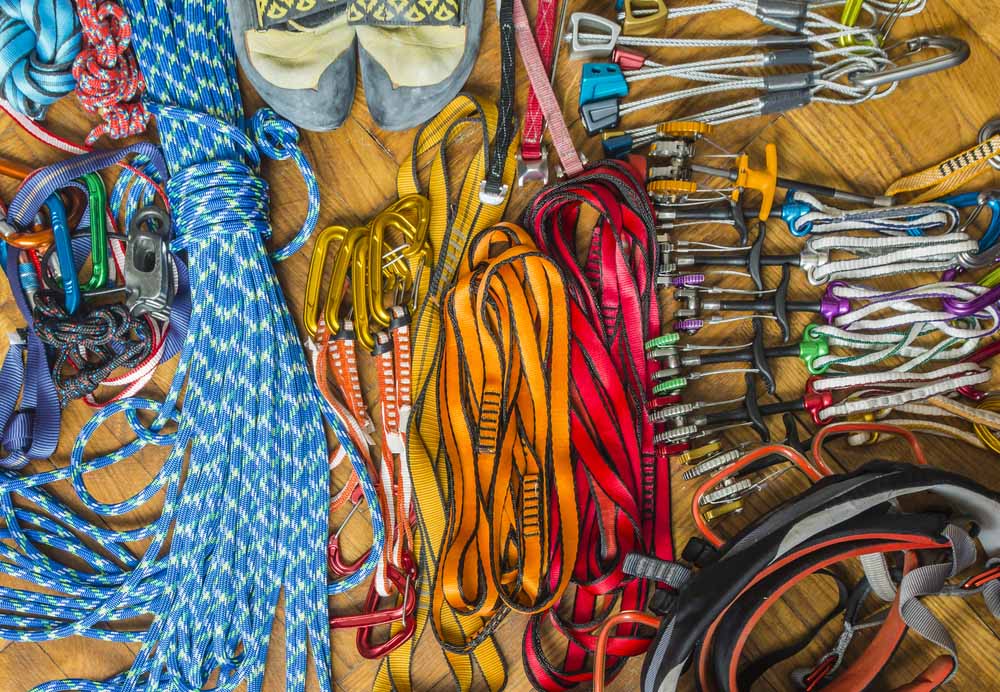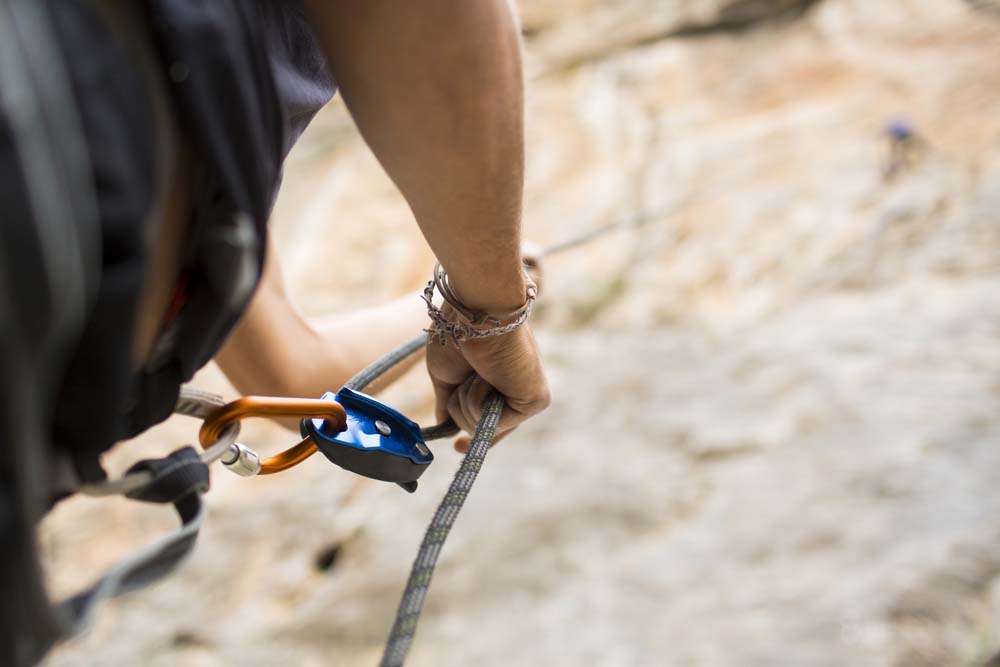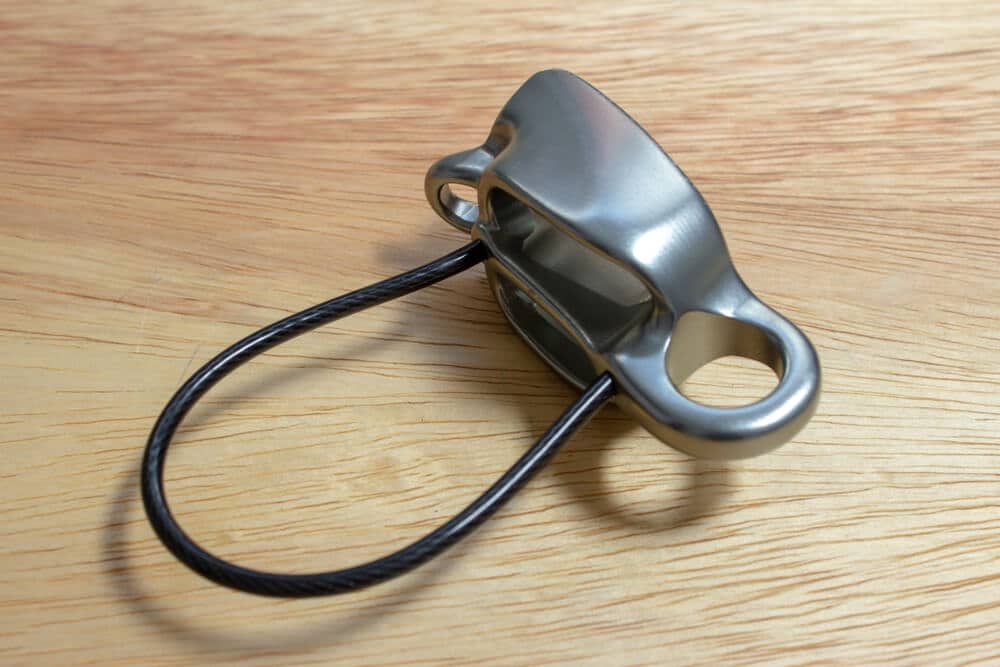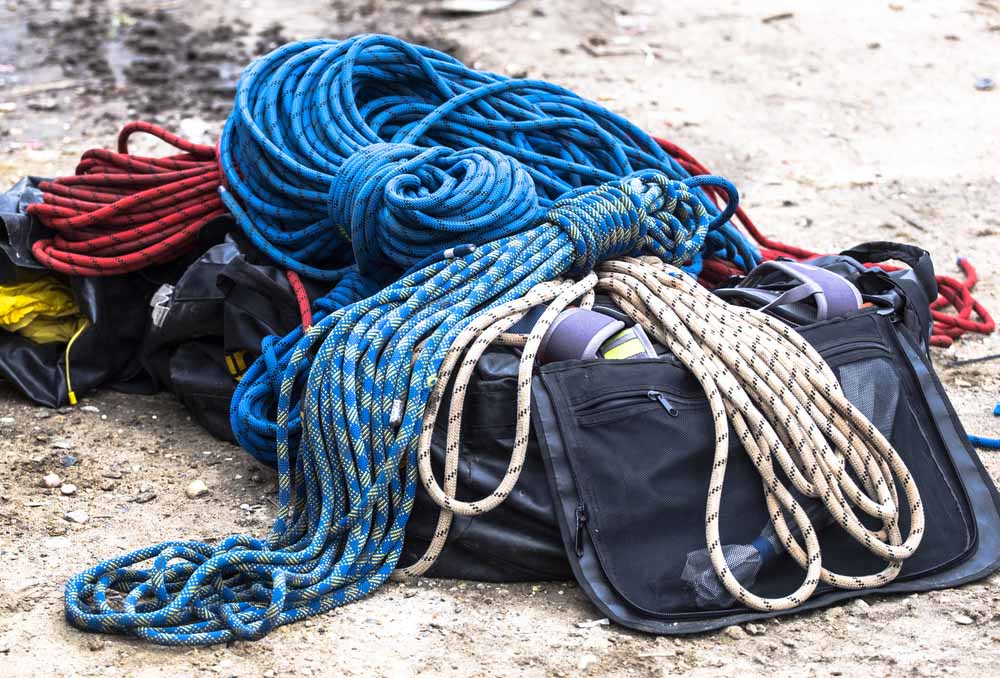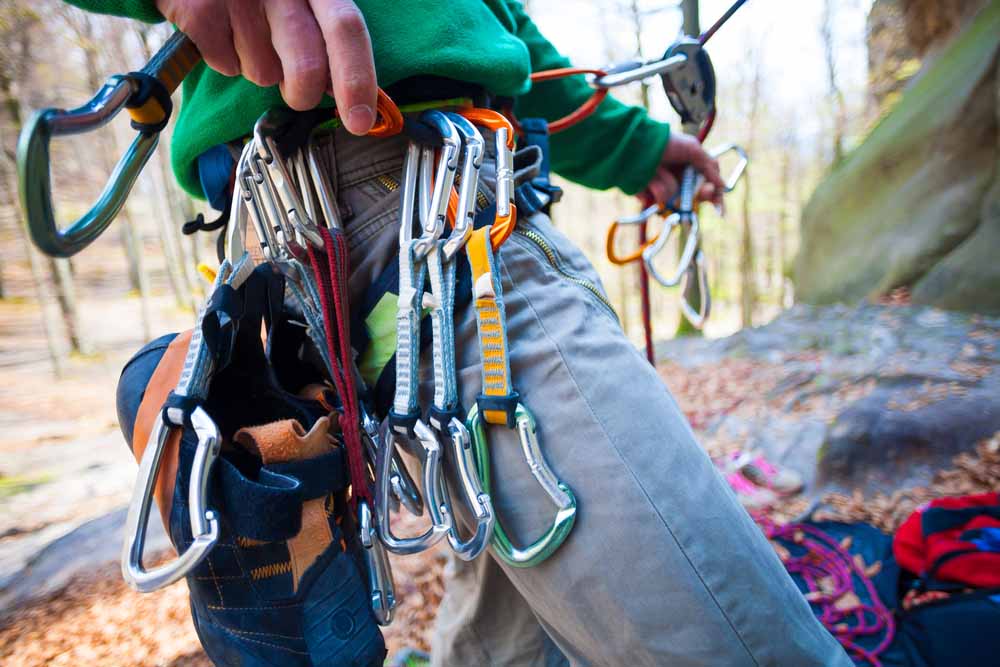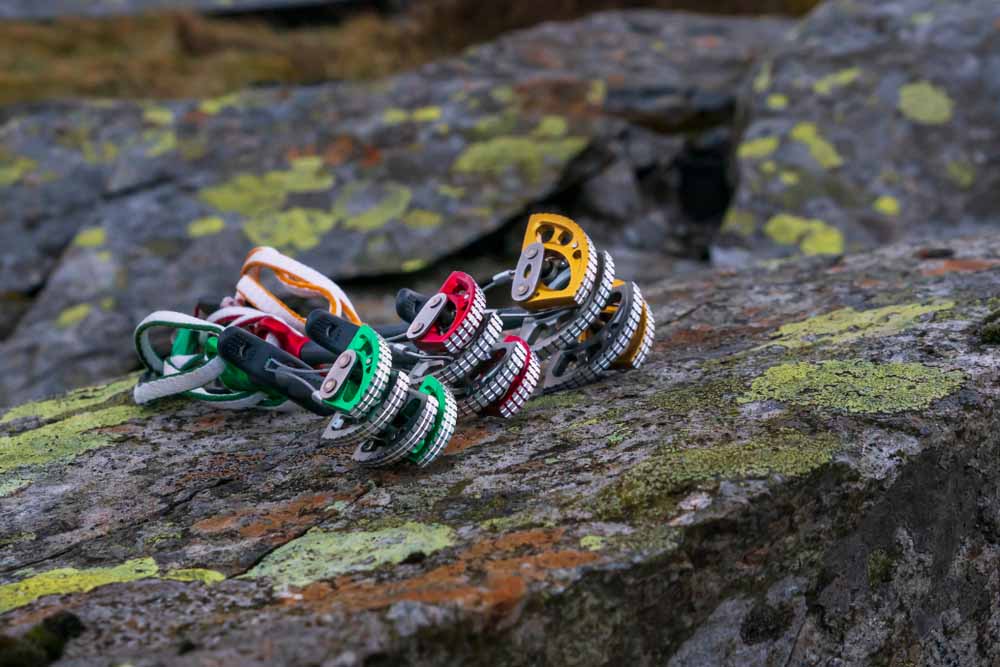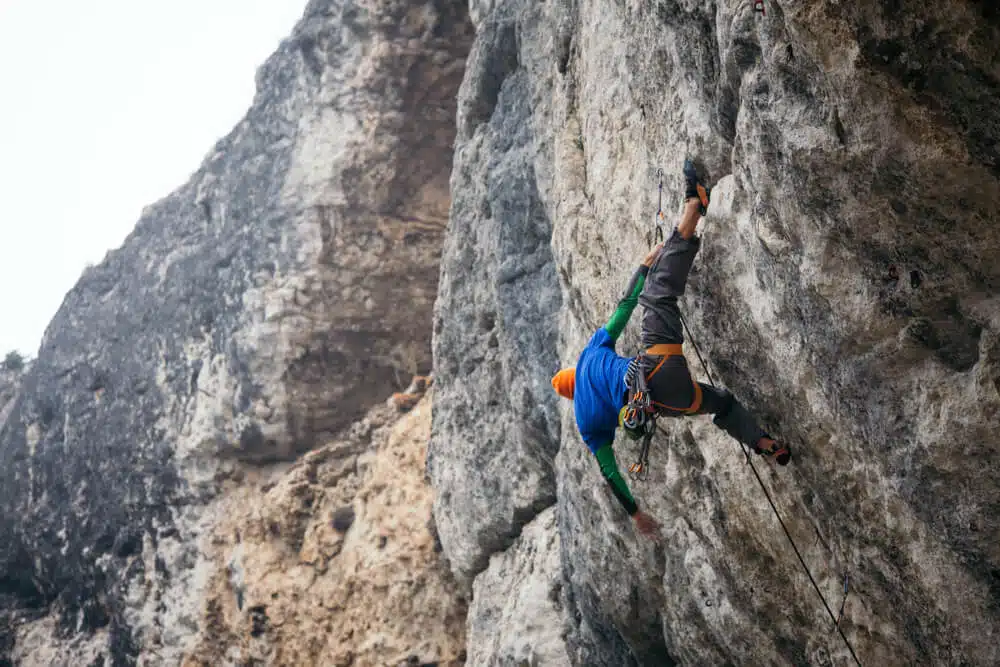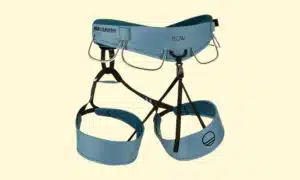From climbing equipment to different disciplines to climbing slang, there are quite a few terms related to climbing! It can feel overwhelming if you are new to the sport, and many people in the climbing community may have more knowledge of different climbing terms than you.
However, as you progress in rock climbing you will naturally come to understand more of the lingo. If you want to accelerate this learning process, this article explains some key rock climbing terms!
Types of Climbing
Rock climbing can take quite a few different forms. Some of the major ones are outlined here.
Bouldering
Bouldering is a type of climbing where one climbs short routes without ropes or harnesses. Instead, there are pads underneath the climb to protect you when you fall. A boulder problem is typically 20 feet or less. Although this is a relatively simple form of climbing in terms of logistics and equipment, it’s very physically and technically challenging!
Sport Climbing
Sport climbing is a form of roped climbing where as the climber ascends a rock face, they clip their rope into bolts. Sport climbing routes typically range from 40 to 120 feet, though longer and shorter routes exist. This is a common discipline within the climbing world, and relatively simple compared to other types of rock climbing.
Traditional Climbing
Traditional climbing, also called trad climbing, is similar to sport climbing in that the climber clips their rope as they ascend the wall. However, instead of clipping into bolts, the climber must place gear such as cams and nuts into cracks in the wall, and then clip into the gear. This discipline requires lots of prior knowledge in order to be done safely.
Lead Climbing
Lead climbing refers to roped climbing where the climber is clipping into something as they climb. This can be bolts (sport climbing) or trad gear (trad climbing). A lead climber may fall a significant distance if they are above their last piece of protection. When the lead climber reaches the top of the climb, they usually clip the rope into the anchors that mark the end of the route. This type of climbing is usually safe, but lead climbers must have a good understanding of how to fall well.
Top Rope Climbing
In contrast to lead climbing, top roping does not present the risk of a large fall. When you top rope, a rope is already through the anchor at the top of the climb. Top rope climbing is often available in the climbing gym, but when climbing outdoors you usually need to know how to lead climb.
Multi-pitch climbing
Multi-pitch climbing refers to any rock climbing route that is more than one rope length. Thus, to get to the top you must climb multiple “pitches”. For example, you can think of a sport multi pitch as several sport climbs stacked on top of each other. This type of climbing can refer to a sport climbing route or to a trad climbing route.
Crack Climbing
Crack climbing is a type of climbing where the climber ascends the rock by jamming their hands and feet into cracks instead of grabbing holds. Cracks are often found on trad climbs, since they can usually be protected by traditional gear. However, there are bolted cracks in some areas.
Slab climbing
Slab climbing refers to any climbing done on rock with an angle that is less than vertical. This can be bouldering or roped climbing. Because of the low angle, slab climbing is often done on relatively featureless rock and it requires good technique.
Free climbing
Free climbing refers to climbing a route without using gear as an aid to upward progress. You can still use gear for protection when free climbing, but in order to ascend you can only use natural features on the rock. You can free climb a trad route or a sport climb.
Free solo climbing
Free solo climbing is different than free climbing, as in free soloing the climber places no gear and climbs without a rope. This means that if they fall, they will fall to the ground. If a climber falls when free climbing, they will be caught by their gear.
Aid climbing
Aid climbing is the opposite of free climbing, and involves climbing using gear to get you up the wall. There’s a lot of complexity to aid climbing, but the general principle is that you are putting your weight onto gear, such as bolts or cams, instead of using the features of the rock face to ascend.
Alpine climbing
Alpine rock climbing refers to climbing done in an alpine environment, meaning above tree line. This can be technical mountain climbing, ice climbing, or high elevation big wall climbing. Many alpine climbs are adventurous in nature and have a higher degree of risk factors, like loose rock and difficult route finding.
Redpoint Climbing
Many climbers want to “send” routes, which means they want to climb them without falling or resting. A common method of doing this is to redpoint a route, which basically means working on the climb on multiple sessions until you piece everything together and send the route!
Onsight Climbing
Redpointing a route is one way of successfully climbing it, but another way is on sighting. This means climbing a route without falling or resting on your first try, without having any prior knowledge about the climb.
Climbing Gear
There’s quite a bit of different climbing equipment that’s used for various facets of the sport. Whether you are going to climbing gym regularly or looking to check out an outdoor climbing area, understanding the different equipment will undoubtedly be helpful. There’s other climbing gear that’s not described here, but this list should give you a good understanding of the basics.
Climbing harness
A harness is a key piece of gear for any type of roped climbing, such as sport climbing or top rope climbing. A harness has a waist belt, leg loops, and a belay loop. When you’re climbing, you tie into the climbing rope by threading it through the harness. When you’re belaying, you attach a belay device to the belay loop of the harness with a locking carabiner.
Gri-gri
A Gri-gri is a belay device that many climbers use for both top rope and lead belaying. A gri-gri is an autolocking belay device, so it provides an extra level of safety. It can also be used for some rappelling situations, or to lower oneself on a fixed rope. These are both methods by which a climber descends a climbing route.
ATC
An ATC is a piece of climbing gear that can be used as a belay device or a rappel device. It is less common to belay with an ATC than a Gri-gri, but ATCs are often used for rappelling.
Climbing rope
A climbing rope is an essential piece of gear for sport climbing, trad climbing, and top rope climbing. A dynamic rope is used for lead climbing; a static rope won’t the same safe, soft catch when the climber falls. When you’re buying a climbing rope, rope length is an important consideration. A 40 meter rope is often sufficient in the gym, but for outdoor climbing you’ll want a longer climbing rope, such as a 70 meter one.
Climbing helmet
Climbers usually wear helmets when rope climbing. This protects the climber if they hit their head during a fall. The belayer should also wear a helmet, so that both the climber and belayer are protected from falling rock.
Climbing shoes
Climbing in your sneakers doesn’t work very well! To rock climb well, you’ll need the right climbing shoe. Climbing shoes have sticky rubber and a pointed shape so you can stand on small edges of rock.
QuickDraws
Quickdraws are used on sport climbs. The basic principle is that you clip one end of the Quickdraw into the bolt, and clip your climbing rope into the other end. Thus, when the lead climber falls, the last QuickDraw that they clipped catches their fall.
Alpine draws
Alpine draws are similar to Quickdraws, but they are made of a sling looped several times and clipped to two carabiners. This means that they are extendable, so they can be useful for reducing rope drag on routes that are not straight.
Cams
Cams are a common piece of protection used in trad climbing. As the lead climber ascends a trad route, they place cams in cracks in the rock and then clip their rope to them. Then, their function is similar to a bolt: they catch the climber if they fall. Cams are a form of active protection, which means they have lobes that you contract to place the piece and then expand to fill the crack. Cams are available in many different sizes to be places in cracks of different widths.
Nuts
Nuts are another common form of trad climbing protection. Many new trad climbers feel less comfortable placing a nut as a piece of protection than a cam, but nuts can work well in certain cracks. They are a passive form of protection, so they don’t have moving parts like cams do. Instead, they are slotted into constrictions in a crack.
Climbing Techniques
Dyno
A dyno is a dynamic rock climbing technique where you jump from one hold to the other. Dynos are commonly found in indoor climbing gyms, but there are plenty of outdoor climbs where you may use them.
Gaston
Of all the climbing techniques there are, this is an important one to know. A gaston refers to grabbing a right facing hold with your left hand, or vice versa. You then point your elbow out so you are pulling outwards on the hold to generate force.
Stemming
Stemming is a climbing technique in which you push into two opposite surfaces. For example, you might stem in a large dihedral or when climbing opposing corners. You can stem with your hands or feet; the principle is the same. Simply push into the two surfaces so that the counter pressure keeps your body in a stable position.
Lay-backing
Lay-backing is a climbing technique that relies on a rock feature like a flake or a crack. To execute this technique, the climber pulls on one side of the feature while leaning their body weight away from their hands. The climber then pushes their feet against the opposite wall, creating counter pressure.
Climbing Slang
In addition to technical rock climbing terms, there’s lots of slang that climbers can use. Understanding what they’re talking about can help you feel like a part of the climbing world!
Pumped
Being pumped is a common reason climbers fall off the wall! Pumped is the sensation you get in your forearms when you’re doing an endurance based type of climbing. You’ll find your forearms start to feel swollen and tired, and you won’t be able to hold onto the rock face.
Flapper
A flapper occurs when a climber tears a large flap of their skin, typically on a finger. Flappers occur more often when you’re new to rock climbing, and can be the result of improper climbing technique. They can be quite painful, but can usually be taped.
Choss
Choss refers to low quality rock. If a climb has holds that break off or any loose rock, it might be described as “chossy”. Many climbers also use this term to describe anything unpleasant. For example, people might say “that approach is choss” if it’s especially long or difficult.
Splitter
Splitter is a term that originated in the arena of crack climbing and describes a beautiful, clean crack. Splitter is the opposite of choss! Similarly to the way choss is used, the use of the term splitter has expanded beyond describing rock. One example of this is describing weather as splitter if it’s a clear, sunny day.
Conclusion
This article outlined some key rock climbing terms that you’ll encounter in the climbing world. Whether you’re on a long climbing route or a short boulder problem, this article will help you sound like you know what you’re talking about the next time you’re out at your favorite climbing area!


